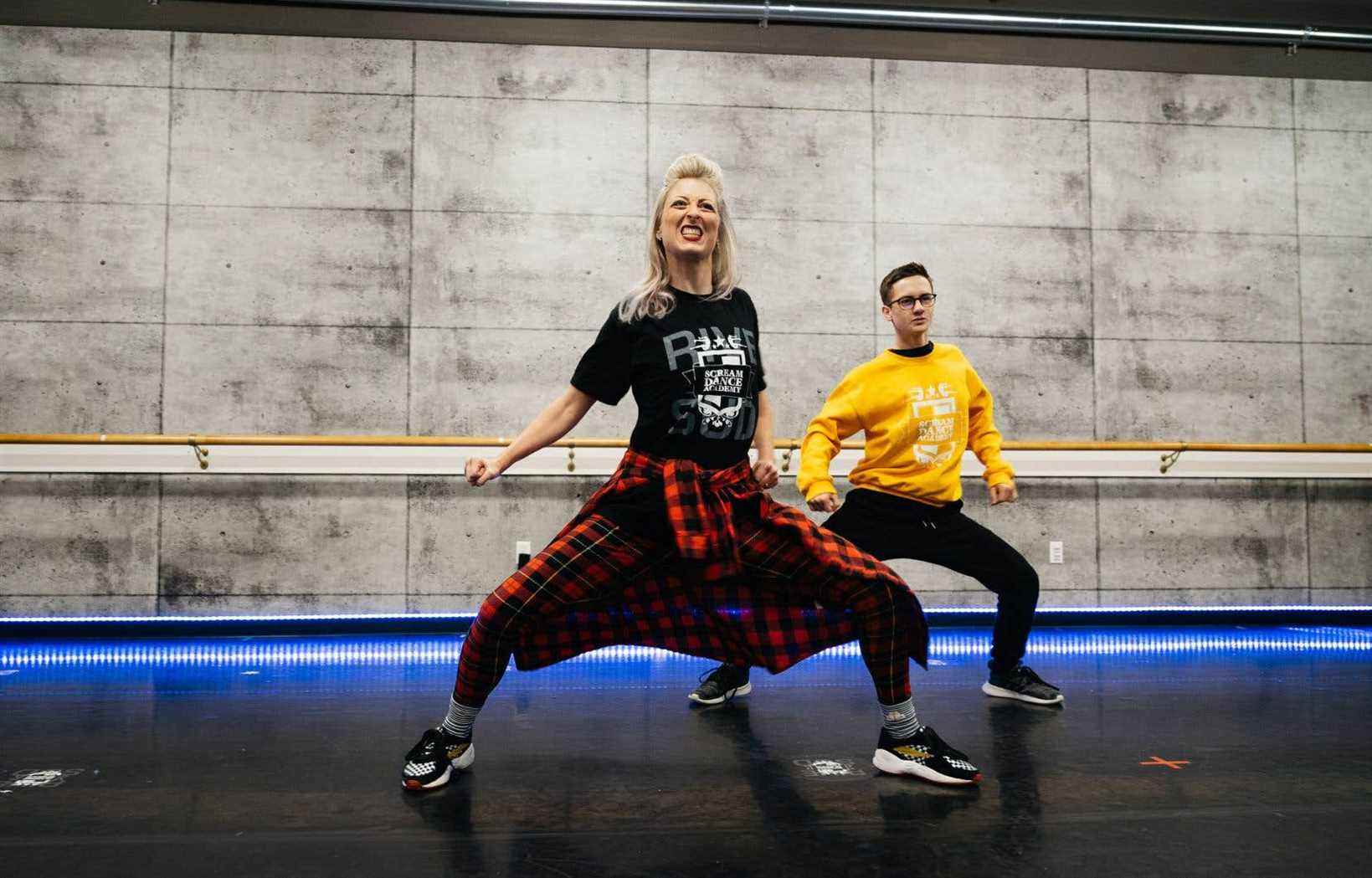In addition to boosting the careers of participants, the popular show Revolution, broadcast on TVA, encouraged many young viewers to enroll in dance lessons to imitate their new models. “The effect Revolution »Has not yet translated into attendance at theaters.
“I literally fell in love with dancing. […] I saw the dancers on TV, I found them really cool and I wanted to do the same, ”says Hugo Brière, 16, who discovered the show during its second edition in 2019.
At the time, he had never really been interested in dancing, he says. “I didn’t play any sport, I had no idea what I liked. And there, it became obvious ”.
In January 2020, Hugo therefore enrolled in hip-hop lessons at the Scream Dance Academy in Brossard, more determined than ever to make up for lost time away from this discipline. Even the pandemic, which struck three months later, has failed to keep the teenager away from his newfound passion. “I took my courses online, I even added lessons from jazz musical I loved it so much ”.
He now spends his Thursday evenings learning new routines at the studio, and is part of two troupes. And when he’s not dancing he watches Revolution – like more than 1.5 million Quebecers – even allowing himself to dream that one day, “when he has the level”, he will perhaps pass the auditions.
“There is really a craze thanks to this show,” adds its teacher, Lynsey Billing, also director and co-founder of the Scream Dance Academy. “The students talk about the choreography, the dancers, their revolution. They want to try new moves they’ve seen on TV and improve their technique. “
Popularity leap
“We had a peak after season 2, in all the styles we teach,” said Lynsey Billing. A success that she also relates to the presence of candidates from Revolution in his school, as students or guest teachers. Among them, Yoherlandy – finalist of the first edition and back in the competition this year – or the duo Willow, which made a strong impression on the jury this year.
For members of the Team White duo, winner of the first edition, the “effect Revolution »Is indisputable, not only for their dancing careers, but also for their Studio Shake school in Blainville. “We had 60 students at the opening in 2018, before Revolution. We went to 150 just after our victory and we are at around 300 at the moment, ”says Alexandre Leblanc.
Several other schools contacted by The duty confirmed that they have seen an increase in registrations since the show’s existence. “We had the same effect when the studio opened in 2007 [avec] So You Think You Can Dance. These programs are really beneficial for dance schools, ”notes Studio Danse Montréal co-owner Anne-Josée Grégoire.
The pandemic of course curbed this momentum by putting schools on hiatus. “We think that in January, it will start again. Vaccination is going well and is coming to young people, then Revolution took over and put the dance back in people’s heads, ”Linsey Billing believes.
” Revolution helps democratize dance in Quebec, observes Nadine Medawar, executive director of the Regroupement québécois de la danse. People talk about it, not just in the dance world. In living rooms with family, friends at school, colleagues at work. From hip-hop to contemporary, including Latin dances, tap dancing or jig, the show highlights various dance styles, thus educating the general public in this vast discipline.
Mme Medawar is also pleased to see discussions about the working conditions of dancers emerging in the public space thanks to the popularity of the show. This year, the participants demanded better remuneration from the production during the shooting days, putting the situation of the dancers in the spotlight. “The average dance artist has an annual income below the poverty line,” says Mme Medawar.
“Powder for the eyes”
However, it will take more than a successful show to encourage Quebecers to attend a dance performance, she said. “It takes more creations, at more affordable prices to attract a larger audience. “
In 2019, while all performing arts disciplines attracted more indoor spectators than in previous years, and even broke ticket sales records, dance was the only area to record a decline of 4%. compared to 2018, according to a recent survey by the Observatoire de la culture et des communications of the Institut de la statistique du Québec.
” Revolution is a show television above all. It helps democratize the circadian aspect of dance, but it’s window dressing. All you see is a sporting feat of 1 minute 30 minutes on television. That does not encourage people to go to see indoor dance performances, which are much longer, ”adds Lucie Boissinot, artistic and studies director at the Montreal School of Contemporary Dance. She believes that there is a big difference between the “show dance” proposed by Revolution and “dance as a stage art” presented by the troupes of professional dancers.
Other stakeholders believe that the show will indeed have an impact on theater attendance over the next few years. Since role models are created in this environment, it is to be expected that young – and not so young – admirers will follow them in their careers. The show of Janie and Márcio, winners of season 2, testifies to this. Tuning, which already has 17 performances (out of 31), has been a great success in theaters.
The show Revolution on tour, which brings together the finalists for each season, also had a “remarkable” start in 2020. Just before the pandemic, 18 performances in Montreal and Quebec were sold out. With the rapid sale of tickets for the other 22 dates of the tour, which resumes in February, the production has added 9 performances with more to come. For Sébastien G. Côté, principal director of the shows and management division at Musicor, which produces the show, “there is really a craze, comparable to that for variety shows”.
